
Five Ways Apple Will Change TV: 4
Why Apple Will Change TV presented similarities between the iPod and iTV, and introduced how Apple is poised to add value to existing content using the iTV in much the same way that the iPod added value to CD and MP3 music collections. Here's the fourth of Five Ways Apple Will Change Your TV.
Previous articles looked at how the iTV is positioned to add value to on-demand commercial content, users' own personal content, and a variety of alternative content. What other kind of content is there?
#4: Interactive Content
Next to static commercial, personal, and alternative content is another class of iTV content: interactive. Unlike the passive entertainment of TV, interactive content involves users. Just like the last three types of content,  there's nothing entirely new here, just a wide open series of markets for Apple to target with the iTV:
there's nothing entirely new here, just a wide open series of markets for Apple to target with the iTV:
 there's nothing entirely new here, just a wide open series of markets for Apple to target with the iTV:
there's nothing entirely new here, just a wide open series of markets for Apple to target with the iTV:-
•electronic learning and interactive presentations
-
•documentation and reference materials
The Birth of Interactive TV
A flurry of interactive TV and set top boxes, all promising to change TV, started to appear over a decade ago. Phillip's CD-i and Commodore's Amiga-based CDTV both tried to mate the TV with game console or set top box hardware and the newly emerging CD-ROM to create a system to bring interactive content to users' TVs.
Years prior to that, Apple's Bill Atkinson developed HyperCard, the first successful hypermedia system. He insisted that Apple bundle it for free on all Macs, which quickly established its popularity.
HyperCard was a useful tool that allowed individuals to build and share their own 'stacks,' or interactive applications that worked much like self contained, dynamic web sites. The popular graphic adventure game Myst, released in 1993, was built with HyperCard.
All this started in 1987, half a decade prior to the arrival of World Wide Web. In fact, the first popular web browser, ViolaWWW, was inspired by HyperCard.
Apple spun off HyperCard, along with its other software applications, into the software subsidiary Claris, where many decent Apple apps died a slow death from a lack of marketing. Apple’s Claris introduced HomePage, a visual HTML editor, in 1995.
That was the same year that Microsoft licensed the Spyglass browser in order to deliver Internet Explorer. So Macs were already editing the web when Windows users were seeing the web browser for the first time!
HyperCard was then pulled back into Apple, where it started morphing into the snowballing mess of QuickTime Interactive. Like the remains of Copland, QuickDraw GX and QuickDraw 3D, QTi was taken out back by Steve Jobs and put down, after his return to Apple in 1997.
Caught In A Web
The pioneering technologies of HyperCard and interactive TV set top boxes were largely replaced by the world wide web, which opened up a simple platform for sharing any type of hyperlinked information.
In the mid 1990’s, Apple seemed to lose any vision for where HyperCard might go. Rather than continue to offer it for free on all Macs, Apple started selling the HyperCard development tools. Without any forward progress, and tasked to generate revenue, HyperCard simply died.
As for attempts to deliver various flavors of set top boxes: a web enabled desktop computer simply offered more interaction and networked community than the various interactive TV systems based on CD-ROM or video game consoles could.
Further, the web on a VGA monitor looked a lot better than anything an interactive set top box could deliver on standard TV in the 1990's. Microsoft found this after purchasing the floundering WebTV set top box and converting it into a stripped down PC for MSN TV, and later UltimateTV. The web just looks bad on standard TVs.
Apple also experimented with trial runs of a Mac based Interactive TV set top box, but canceled it during testing.
Flash in the Pan
A full decade after the arrival of HyperCard, Macromedia bought a startup called FutureSplash and reintroduced its product in 1997 as Flash. Like HyperCard, Flash allowed programming novices to build interactive programs with easy to create animations and other multimedia effects.
Macromedia built Flash into one of the most popular ways to enhance HTML web pages with interactive content. Adobe's purchase of Macromedia folded Flash into Adobe's plans for its creative applications, and continues the push to make Flash a development platform.
Since Flash is designed around a slideshow timeline unfamiliar to more conventional programmers, Adobe is now presenting the functionality of Flash as a general web development system centered on the Eclipse IDE, called Flex.
Both use the same ActionScript and are designed to create stand alone applications that work very much like modernized versions of the old HyperCard stacks from twenty years ago.
The abundance of Flash mini apps, in addition to Adobe's similar, but more complex and involved ShockWave platform, demonstrates a demand for programming tools to create interactive content, not just for the web, but for mobile phones and other devices.
The downside to Flash is that it is wholly owned and controlled by Adobe, which in part markets Flash to its content-creator customers as a way to create closed websites. Flash is DRM for the web; DRM isn’t always bad, but websites done in Flash nearly always are... and I only say nearly to be nice.
Open Interactive Alternatives
Of course, Adobe isn't the only vendor trying to push an interactive platform. Last year, Microsoft decided to compete with Adobe by bundling its own alternative to Flash into Windows Vista, under the code name Sparkle. It was quickly dubbed “the Flash killer.”
Microsoft similarly hopes to kill Adobe’s PDF with its own Metro/XPS, just as it mostly killed OpenGL with DirectX, tried to kill MP3/AAC with WMA, and wants to kill JPEG with Windows Media Photo. Microsoft isn’t a fan of open standards.
Sun has long targeted Java to fill many of the same goals and more on set top boxes, phones, and the web. And of course, Apple has offered its own interactive features in Quicktime for years. Quicktime also supports Flash as a component in Quicktime movies.
The W3C's open specification for interactive media, Synchronized Multimedia Integration Language or SMIL, uses an XML based architecture to describe interactive presentations, making it easy to add accessibility features and provide alternative access, including search engine support, to interactive content. Apple has built its recent interactive Quicktime features using the open SMIL specification.
Gaming Interactive TV
Why is all this money being thrown at developing simple interactive features that pale in comparison to what can be accomplished in a full blown desktop application? Because increasingly intelligent devices are now bringing interactive content into devices beyond the PC.
As Apple recently demonstrated with the iPod, there is latent processing ability on the device to deliver a variety of games, from the standard fast paced arcade titles to the more strategic and leisure card game.
Given the rash of outcry from developers who were upset that Apple didn't also approach them to build games for the iPod, and the flurry of users who rated their $5 game purchases favorably in iTunes, there is certainly a market for iPod games.
Distribution of games through iTunes creates a huge new differentiation: Apple has created a market for small, mobile programs; iPod games are just the start.
When small developers toil to build applications that are widely pirated, the only way they can stay in business is to charge enough so that the minority who actually pay will make their efforts worthwhile.
As Mac developer Daniel Jalkut described in his article Lawful Prey, finding a fair price for software is very difficult for small developers; give up potential revenue by pricing too low, or lose potential sales volume by pricing too high?
Money Changes Everything
The iPod games available in iTunes are far more difficult to steal because they are authorized by iTunes prior to being uploaded onto the iPod. That allows Apple to sell the games for very little and still make a sustainable profit by selling in volume. 

Anti-DRM protesters like to boo any mention of selling media with copy protection, but it’s a simple fact that markets require security to function. If businesses can't recover profits for their efforts, they will pull out of the market and find areas where they can compete.
Free software is a great resource, but the majority of consumers want to buy finished products, just as they choose to buy clothes in retail stores and eat in restaurants, rather than grow all of their own food and clothing.
As consumers, we pay for things we value, or we do without. Software developers deserve to profit from their creations just the same as people who sew pants or cook fish.

By offering a marketplace for interactive content with a low but enforceable price, Apple has created a lot of interest from developers, who now have a way to securely benefit from the work they invest in producing interactive content designed for the iPod.
This is the same model Apple pursued in selling music and TV, and more recently Disney movies: secure sales with reasonable restrictions for users, in exchange for low priced content that will sell in volume, and result in further hardware sales.
The Root of All Evil
Note that Apple's competitors--principally Sony's ATRAC and Microsoft and its WMA parters--were trying to do just the opposite: lock everything down so tight that consumers would have no choice but to pay through the nose for high priced downloads or settle for rented exploding music.

Microsoft in particular courted RIAA members to sell them on a fantasy where consumers could be lined up and charged a monthly head tax simply for the equivalent of listening to the radio.
Their input resulted in Microsoft devising a draconian DRM system that put customers last and trampled any notion of fair use rights.
Blinded by greed, all the members of the WMA failure, from WalMart, to MTV, to the company who bought up the Napster name in order to play along with PlaysForSure, all set up WMA stores hoping to fleece their customers.
Instead, the public largely ignored them. While real prospects for making money draw attention and develop markets, money is a lot like alcohol: it just makes you more of what you already are. People can be fooled, but not forever.
Second Verse, Same As The First
By offering value to consumers who were ready to pay for digital content, but not willing to be treated badly, Apple simply cleaned up in the digital downloads market.
Having decisively won in selling static media, Apple is now poised to sell dynamic and interactive media. The existing half dozen iPod games are just the beginning.
In the same way that downloadable movies are not direct competitors to DVD or HD cable offerings, the games Apple is offering for the iPod don't have to compete against dedicated game consoles and the Sony Playstation Portable. They are alternative offerings, with different and entirely complementary markets and uses.
I don't have to give up my Netflix DVD subscription in order to download an occasional movie from iTunes, nor do I have to choose between buying CDs and buying iTunes tracks. I can do either to fit different circumstances.
DVD subscription in order to download an occasional movie from iTunes, nor do I have to choose between buying CDs and buying iTunes tracks. I can do either to fit different circumstances.
Enter the iTV
I pointed out earlier that the iTV will be more like an upgraded iPod than a dumbed down PC. Further, since iTunes will supply the same iPod content to play on the iTV, it’s no stretch to suggest that the iTV would make an alternative games console by playing existing, and forthcoming, iPod games.
The iTV's potential for competing for the casual gamer market is high, not because it competes in any way with the latest rendering engines that power the Xbox 360 and the coming Sony PS3 and Nintendo Wii, but because its games cost $5 rather than north of $50.
Further, while nobody is going to weigh buying an iTV against buying a PS3, there will be millions of people buying an iTV in order to stream on-demand, personal, and alternative content to their TV; interactive content will simply be more icing on the cake.
Game Console Deathmatch
Something else to consider: Microsoft's success with establishing the Xbox as a competitor to the Sony Playstation was impressive, despite the fact that it is entirely unprofitable. Microsoft blew through billions of dollars to distribute Xbox hardware at a loss of around $150 per console.
Still, in the last five years, they've sold around 24 million Xbox units. Apple has sold 60 million iPods, but at a sustainable profit, not a loss. Half of those were sold in the last year, so a significant chunk of those were 5G iPods. That's a large installed base of potential game buyers; the iTV won’t have to blaze a new platform trail. It’s already there.
Consider too that some industry wags are pointing out that the biggest threat to Sony's PS3 is the existing Playstation 2. There are around 120 million PS2 consoles out there.
Sony is competing against itself because the existing PS2 has lots of games, works fine for many gamers, and has active development going on already.
This is another example of how the state of the art is so easy to create, but so difficult to sell, as I've highlighted in the series of articles on the Rise and Fall of Platforms.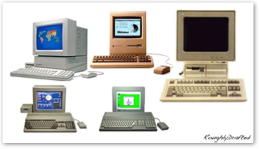

Both Sony and Microsoft are working to deliver amazing hardware performance in their next generation consoles, but special effects don't automatically create games people want to play.
In contrast, Nintendo has targeted playability, rather than hardware computation capacity, as the driving force behind its new Wii console. Nintendo is hoping to compete with novel games that make use its innovative controllers to reach a wider audience of diverse players.
Similarly, Apple can add a lot of value to the iTV by offering the option of downloadable software, from classic arcade games, to simple interactive titles that turn users’ TVs into something far more dynamic.
Apple has already revealed some hints showing how Leopard will provide improved support for Notes. Rather than being simple hyperlinked text documents, the new Notes are a headline feature in Mail.app, and will be available throughout Mac OS X 10.5.
By improving the iPod's support for Notes, as I recommended in my Generation 6 iPod software wishlist, Apple will push Notes into a truly useful sphere of dynamic, interactive content with embedded graphics and links to iPod content.
This type of Notes 2.0 content similarly resurrects the 20 year old functionality of HyperCard in providing an easy way for end users to present stacks of multimedia content in sharable presentations. On the Mac, ‘to go’ on the iPod, or, in the next obvious step, to put these interactive Notes on the iTV. 

Here’s a few practical reasons for doing that:
-
•electronic learning
-
•product and software documentation and tutorials
-
•how-to instructions
-
•maps and directions
-
•tours and walkthroughs
Games, Notes, and Widgets, Oh My
Of course, there is one more thing.
Beyond iPod games and Notes 2.0, Apple has been hard at work building a slick new way to use Safari's WebKit to create new ways of retooling static web pages: Dashboard Widgets and the new Web Clippings, which act like live bits of webpages, displayed directly in Dashboard.
Since Nokia has ported Safari's web engine to its cell phones, is it much of a stretch for Apple to deliver a light version of web rendering for the iTV? Imagine being able to pull up standard Widgets on your TV to monitor webcams, casually consult Wikipedia, display clippings of web pages, or do any of the several hundred other things available in Dashboard.
Even if I’m wrong, and the iTV doesn’t have the capacity equivalent to a cell phone to run a browser, it should be no problem to deliver the desktop of a computer to the iTV using VNC. Networked, thin client terminals are why VNC was invented!

The most interesting aspect of all these examples is that there simply isn't much Apple has to do to drop these pieces into place. It already has a unique distribution system for both paid and free content in iTunes, it already has a portable version of iTunes in the iPod, and there's little left to deliver in the iTV - it’s an iPod with an HDMI connection instead of a small screen.
What's Next?
So far, I've outlined four areas Apple can add value with the iTV by targeting new distribution or functionality for users:
4) Interactive content
What else is there? There's one more category of content left:
Next Articles:
This Series:










Friday, October 6, 2006
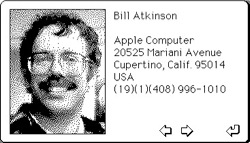










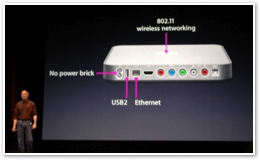
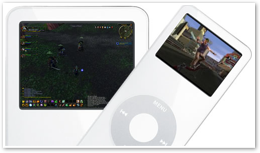
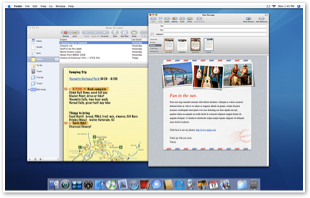
 Bookmark on Del.icio.us
Bookmark on Del.icio.us Discuss on Reddit
Discuss on Reddit Critically review on NewsTrust
Critically review on NewsTrust Forward to Friends
Forward to Friends
 Get RSS Feed
Get RSS Feed Download RSS Widget
Download RSS Widget





